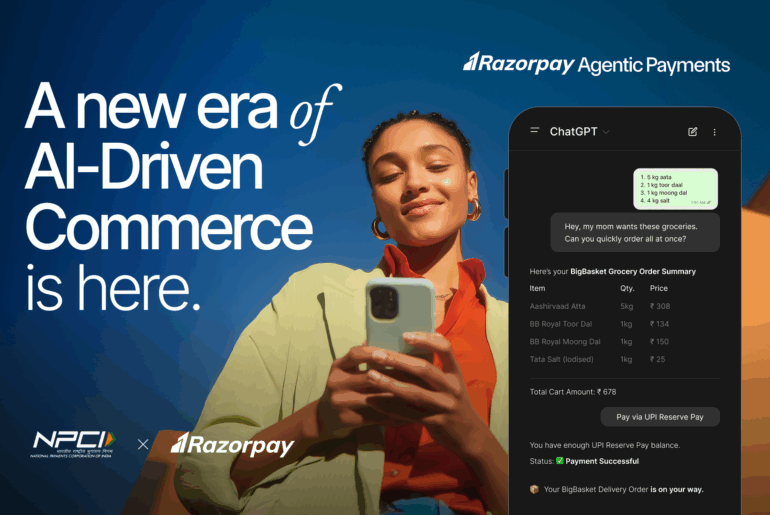UPI has transformed digital payments in India, making transactions seamless and accessible. However, while the speed and convenience of UPI are undeniable, the experience remains largely transactional—lacking personalisation, context, and added value. Imagine a world where every UPI payment is more than just a transaction—where it offers real-time discounts, flexible payment options, and seamless service discovery. That’s exactly what Razorpay aims to deliver by launching Contextual Payments on UPI.
The Drawbacks of a One-Size-Fits-All Payment Experience
Currently, UPI payments operate in a flat, context-agnostic manner. Whether a customer is booking a metro ticket, shopping online, or dining at a restaurant, the payment experience remains the same. No added benefits, no contextual insights, and no real-time offers for the users who choose UPI as their preferred payment method. For merchants, this lack of personalization creates major challenges:
- Missed Revenue Opportunities: No dynamic offers or incentives to influence customer spending.
- Limited Credit & EMI Access: Users often miss out on financing options at the moment of purchase.
- Lack of Service Discovery: Additional services like lounge access or metro ticketing require separate apps and platforms, adding friction.
- Fraud & Chargebacks: Merchants face losses from fraudulent transactions with no preemptive risk prevention.
The Future of UPI is Contextual
Razorpay is launching a first-of-its-kind hybrid payment innovation that personalizes the UPI experience. By integrating with merchant acquiring banks and users’ issuer banks, this solution brings real-time, contextual insights to every UPI transaction.
Key Features & Use Cases
 1. Instant Offers & Discounts:
1. Instant Offers & Discounts:
Merchants can apply amount-based offers, phone number-based offers or velocity-based offers like first 3 transactions free for a new user. So, first-time users, high-value transactions, and loyal customers can get customized deals at checkout.
2. On-the-Fly EMI Conversion:
Customers can instantly convert transactions into EMIs at the time of payment based on issuer/acquiring bank-supported EMI options.
3. Seamless Service Discovery & Fulfillment:
Customers can check and book lounge access and purchase metro tickets directly from their UPI app.
4. Fraud Prevention & Risk Mitigation:
Contextual Payments leverages collective intelligence from NPCI, acquiring banks, and fintechs to identify and block fraudulent VPAs and numbers before a payment is processed. This proactive fraud prevention mechanism reduces chargebacks and losses for merchants.
How It Works: The Contextual Payment Flow
Razorpay ensures that contextual data is fetched, processed, and seamlessly integrated into the UPI transaction flow.
Step 1: Gathering Context
When a user initiates a UPI payment via a TPAP (e.g., Google Pay, PhonePe), Razorpay fetches additional insights:
- From the Merchant’s Acquiring Bank: Razorpay gathers merchant-side offers, available discounts, payment preferences, and eligibility for EMI options.
- From the User’s Issuer Bank: The TPAP collects additional context from the remitter bank by sharing the merchant’s details.
Step 2: Enriching the Transaction
Razorpay processes this data in real time and ensures it is displayed to the user within their TPAP app before finalizing the payment.
Step 3: Processing the Payment
The user proceeds with the enriched transaction, unlocking a more tailored and rewarding payment experience while merchants benefit from higher conversion rates.
Contextual Payments is not just a new feature in the UPI universe—it’s a paradigm shift in how UPI transactions work. By bringing real-time intelligence into payments, merchants can now deliver hyper-personalized experiences, drive higher revenue, and mitigate risks.


